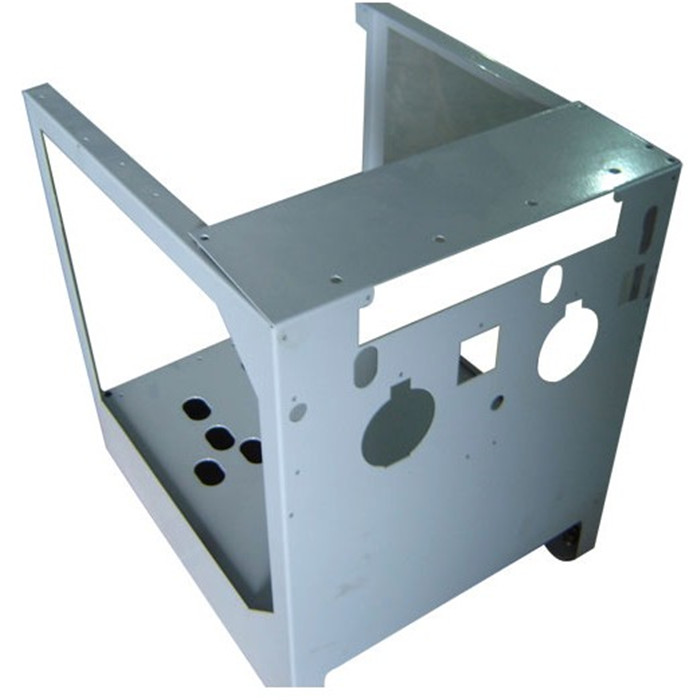What is the coefficient of bending?
Bending coefficient belongs to the category of sheet metal processing. For example, a part with a angle bar shape, the length of both sides are A and B relatively, then the actual processing is to use punch processing to expansion it, its development size is A + B - bending coefficients corresponding = development size。 Bending expansion coefficient is that experienced bending master, according to years of design experience repeatedly verified and summarized the data, and then sheet metal bending workers can use the calculation formula by imputing some data to get the expansion plate size of the bending parts. This bending coefficient is different from the bending coefficient of Solidworks and Proe, which cannot be used for calculation. It is equivalent to the bending deduction of solidworks and can be substituted into calculation.
The application range of the bending coefficient in this paper
It can be used for bending workers of sheet metal processing plant to calculate the expansion length of sheet metal. It can be used for sheet metal technicians and sheet metal structural engineers to calculate the length of sheet metal development drawings. It can be used for bending calculation of SolidWorks sheet metal module.
Formula for calculating bending coefficient of sheet metal
Bending coefficient of Carbon steel, Q235 and iron plate = plate thickness*1.7
Bending coefficient of aluminum plate and copper plate = plate thickness *1.6
Bending coefficient of stainless steel plate = *1.8 thickness
Example: Material is Q235 steel plate with thickness 1mm: the bending coefficient of 1mm is 1.7.
Use 1mm thick steel plate to process a piece of Angle steel with dimensions of 10 and 30 on both sides, then the expansion size is: 10+30-1.7=38.3
Commonly used sheet metal bending coefficient table
Table 1: The coefficient selection and comparison table for 90-degree bending in common materials.
|
V width |
Cold rolled steel sheet, Galvanized sheet, |
|||||||||||||
|
0.6 |
0.8 |
1.0 |
1.2 |
1.5 |
2.0 |
2.5 |
3.0 |
3.5 |
4.0 |
4.5 |
5.0 |
The shortest dimension |
remarks |
|
|
V4 |
0.9 |
1.4 |
|
|
|
|
|
|
|
|
|
|
2.8 |
When parts are marked with negative tolerance, the bending coefficient value can be increased, as the figures highlighted by yellow in the table can be increased to: 2.8; 2,82; 3.4; 3.43; 4.5; 4.6; 5.5; 5.6 |
|
V6 |
|
1.5 |
1.7 |
2.0 |
|
|
|
|
|
|
|
|
4.5 |
|
|
V7 |
|
|
1.8 |
2.1 |
2.4 |
|
|
|
|
|
|
|
5 |
|
|
V8 |
|
|
1.9 |
2.2 |
2.5 |
|
|
|
|
|
|
|
5.5 |
|
|
V10 |
|
|
2.1 |
2.3 |
2.7 |
|
|
|
|
|
|
|
7 |
|
|
V12 |
|
|
2.2 |
2.5 |
2.8 |
3.4 |
|
|
|
|
|
|
8.5 |
|
|
V14 |
|
|
|
|
|
3.5 |
3.8 |
|
|
|
6.4 |
6.8 |
10 |
|
|
V16 |
|
|
|
|
3.1 |
3.8 |
4.5 |
5.0 |
|
|
|
|
11 |
|
|
V18 |
|
|
|
|
3.3 |
4.0 |
|
|
|
|
|
|
13 |
|
|
V20 |
|
|
|
|
|
4.0 |
4.9 |
5.1 |
|
6.6 |
7.2 |
7.8 |
14 |
|
|
V25 |
|
|
|
|
|
4.4 |
5.0 |
5.5 |
|
6.8 |
7.8 |
8.3 |
|
|
|
V32 |
|
|
|
|
|
5.0 |
5.5 |
6.1 |
|
8.7 |
|
|
|
|
Table 2: bending coefficients of different bending angles
|
Plate thick. |
30º |
45º |
60º |
120º |
135º |
145º |
|
1.0 |
0.35 |
0.7 |
1.1 |
1.0 |
0.6 |
0.4 |
|
1.2 |
0.4 |
0.8 |
1.2 |
1.0 |
0.6 |
0.4 |
|
1.5 |
0.5 |
1.0 |
1.6 |
1.4 |
0.9 |
0.6 |
|
2.0 |
0.6 |
1.2 |
2.0 |
1.7 |
1.1 |
0.7 |
|
2.5 |
0.8 |
1.6 |
2.6 |
2.2 |
1.4 |
0.85 |
|
3.0 |
1.0 |
2.2 |
3.4 |
2.8 |
2.0 |
1.2 |
|
4.0 |
|
|
|
3.7 |
2.4 |
1.4 |
This is sheet metal bending experience i what to share with peer, hopefully it can help bending workers, bending design engineers, sheet metal process plant.


 Thick.
Thick. Angle
Angle